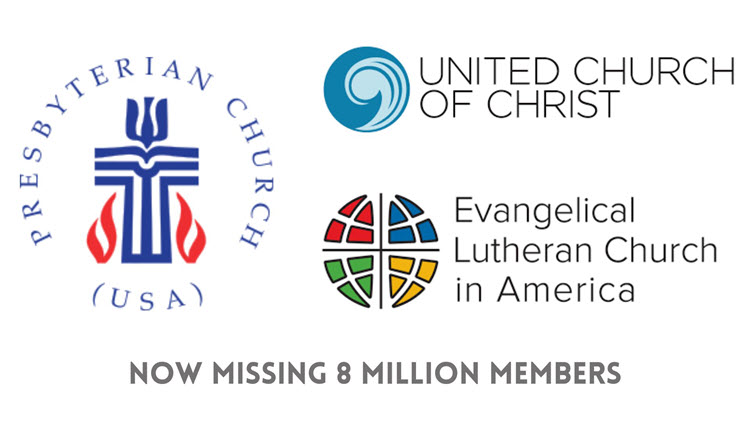Excepting the four years I spent serving two congregations affiliated with the Christian Church (Disciples of Christ), I’ve spent my entire life in three religious traditions within what is often called Mainline Protestantism: Evangelical Lutheran Church in America, Presbyterian Church (USA), and United Church of Christ.
Over the last three days, I’ve explored one of the underreported aspects in the decades old story of Mainline decline: the decline is worse than it first appears because during the time of considerable declines in membership the American population has grown significantly. Sociologist Ryan Burge determined what current membership would be in several denominations if they had retained market share or, put differently, if they grew at the rate the population grew over the last 30+ years.
The math is very straightforward and the trend should be deeply disturbing to anyone who cares about the future of these denominations. My denomination specific explorations provide additional insight, including mode detailed statistical considerations:
- The UCC is Missing 1.3 Million People!
- The PC(USA) is Missing 2.6 Million People!
- The ELCA is Missing 4 Million People!

The 8 Million Member Shortfall
The 2021 membership of the UCC, PC(USA), and ELCA are 8 million (7.9 million to be precise – although that number has climbed well above 8 million by mid-2023) fewer than expected if one expected these denominations to retain market share over the last 30+ years.
So What?
I have invested more than 40 years of my life into these three denominations and have recently committed to permanently aligning my ongoing work with the UCC (see Seeking Ordination – Update #8). I have long been one who believes that accurately understanding the present challenge is key to developing strategies to overcome it. While I do not see the total reversal as achievable in my lifetime (ex: these three denominations achieving the market share they held in the late 1980s or early 1990s ), I do believe that slowing the rate of decline is essential and that the lessons learned in that process are ones necessary to replaced slower decline with growth.
I trust that the ongoing work of change, revitalization, and growth requires new ways of thinking and doing and leads to new ways of being church.